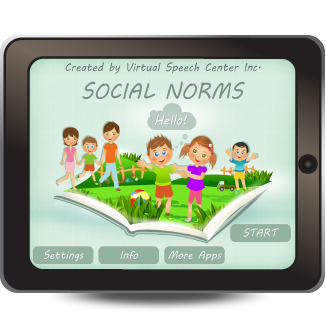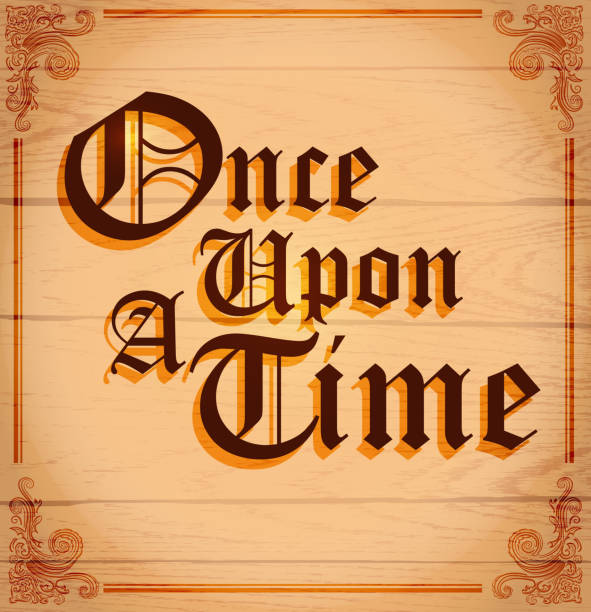Recently I began writing a series of posts on the topic of comprehensive assessment of dyslexia.
In part I of my post (HERE), I discussed common dyslexia myths as well as general language testing as a starting point in the dyslexia testing battery.
In part II (HERE) I detailed the next two steps in dyslexia assessment: phonological awareness and word fluency testing.
In part III (HERE) I discussed reading fluency and reading comprehension testing.
Today I would like to discuss part IV of comprehensive dyslexia assessment, which involves spelling and writing testing.
Spelling errors can tell us a lot about the child’s difficulties, which is why they are an integral component of dyslexia assessment battery. There is a significant number of linguistic skills involved in spelling. Good spellers have well-developed abilities in the following areas (Apel 2006, Masterson 2014, Wasowicz, 2015):
- Phonological Awareness – segmenting, sequencing, identifying and discriminating sounds in words.
- Orthographic Knowledge – knowledge of alphabetic principle, sound-letter relationships; letter patterns and conventional spelling rules
- Vocabulary Knowledge -knowledge of word meanings and how they can affect spelling
- Morphological Knowledge- knowledge of “word parts”: suffixes, prefixes, base words, word roots, etc.; understanding the semantic relationships between base word and related words; knowing how to make appropriate modifications when adding prefixes and suffixes
- Mental Orthographic Images of Words- clear and complete mental representations of words or word parts
By administering and analyzing spelling test results or spelling samples and quizzes, we can determine where students’ deficits lie, and design appropriate interventions to improve knowledge and skills in the affected areas.
 While there are a number of spelling assessments currently available on the market I personally prefer that the Test of Written Spelling – 5 (TWS-5) (Larsen, Hammill & Moats, 2013). The TWS-5 can be administered to students 6-18 years of age in about 20 minutes in either individual or group settings. It has two forms, each containing 50 spelling words drawn from eight basal spelling series and graded word lists. You can use the results in several ways: to identify students with significant spelling deficits or to determine progress in spelling as a result of RTI interventions.
While there are a number of spelling assessments currently available on the market I personally prefer that the Test of Written Spelling – 5 (TWS-5) (Larsen, Hammill & Moats, 2013). The TWS-5 can be administered to students 6-18 years of age in about 20 minutes in either individual or group settings. It has two forms, each containing 50 spelling words drawn from eight basal spelling series and graded word lists. You can use the results in several ways: to identify students with significant spelling deficits or to determine progress in spelling as a result of RTI interventions.
Now, lets move on to assessments of writing. Here, we’re looking to assess a number of abilities, which include:
- Mechanics – is there appropriate use of punctuation, capitalization, abbreviations, etc.?
- Grammatical and syntactic complexity – are there word/sentence level errors/omissions? How is the student’s sentence structure?
- Semantic sophistication-use of appropriate vs. immature vocabulary
- Productivity – can the student generate enough paragraphs, sentences, etc. or?
- Cohesion and coherence- Is the writing sample organized? Does it flow smoothly? Does it make sense? Are the topic shifts marked by appropriate transitional words?
- Analysis – can the student edit and revise his writing appropriately?
Again it’s important to note that much like the assessments of reading comprehension there are no specific tests which can assess this area adequately and comprehensively. Here, a combination of standardized tests, informal assessment tasks as well as analysis of the students’ written classroom output is recommended.

For standardized assessment purposes clinicians can select Test of Early Written Language–Third Edition (TEWL–3) or Test of Written Language — Fourth Edition (TOWL-4).
The TEWL-3 for children 4-12 years of age, takes on average 40 minutes to administer (between 30-50 mins.) and examines the following skill areas:
Basic Writing. This subtest consists of 70 items ordered by difficulty, which are scored as 0, 1, or 2. It measures a child’s understanding of language including their metalinguistic knowledge, directionality, organizational structure, awareness of letter features, spelling, capitalization, punctuation, proofing, sentence combining, and logical sentences. It can be administered independently or in conjunction with the Contextual Writing subtest.
Contextual Writing. This subtest consists of 20 items that are scored 0 to 3. Two sets of pictures are provided, one for younger children (ages 5-0 through 6-11) and one for older children (ages 7-0 through 11-11). This subtest measures a child’s ability to construct a story given a picture prompt. It measures story format, cohesion, thematic maturity, ideation, and story structure. It can be administered independently or in conjunction with the Basic Writing subtest.
Overall Writing. This index combines the scores from the Basic Writing and Contextual Writing subtests. It is a measure of the child’s overall writing ability; students who score high on this quotient demonstrate strengths in composition, syntax, mechanics, fluency, cohesion, and the text structure of written language. This score can only be computed if the child completes both subtests and is at least 5 years of age.
 The TOWL-4 for students 9-18 years of age, takes between 60-90 minutes to administer (often longer) and examines the following skill areas:
The TOWL-4 for students 9-18 years of age, takes between 60-90 minutes to administer (often longer) and examines the following skill areas:
- Vocabulary – The student writes a sentence that incorporates a stimulus word. E.g.: For ran, a student writes, “I ran up the hill.”
- Spelling – The student writes sentences from dictation, making proper use of spelling rules.
- Punctuation – The student writes sentences from dictation, making proper use of punctuation and capitalization rules.
- Logical Sentences – The student edits an illogical sentence so that it makes better sense. E.g.: “John blinked his nose” is changed to “John blinked his eye.”
- Sentence Combining – The student integrates the meaning of several short sentences into one grammatically correct written sentence. E.g.: “John drives fast” is combined with “John has a red car,” making “John drives his red car fast.”
- Contextual Conventions – The student writes a story in response to a stimulus picture. Points are earned for satisfying specific arbitrary requirements relative to orthographic (E.g.: punctuation, spelling) and grammatic conventions (E.g.: sentence construction, noun-verb agreement).
- Story Composition – The student’s story is evaluated relative to the quality of its composition (E.g.: vocabulary, plot, prose, development of characters, and interest to the reader).
It has 3 composites:
- Overall Writing- results of all seven subtests
- Contrived Writing- results of 5 contrived subtests
- Spontaneous Writing-results of 2 spontaneous writing subtests
However, for the purposes of the comprehensive assessment only select portions of the above tests may need be administered since other overlapping areas (e.g., spelling, punctuation, etc.) may have already been assessed by other tests, a analyzed via the review of student’s written classroom assignments or were encompassed by educational testing.
Today I am reviewing a brand new app by the Virtual Speech Center -Articulation Carnival (requires iOS 7 or later; compatible with iPad). Virtual Speech Center did a great job creating a fun app, where the kids get to go to a “carnival’ and practice their articulation at the word, phrase, and sentence levels.
 The following is an informational post on the disease SMA (spinal muscle atrophy) by Rose Ann Kesting M.A. CCC-SLP. After reading, please
The following is an informational post on the disease SMA (spinal muscle atrophy) by Rose Ann Kesting M.A. CCC-SLP. After reading, please  Today’s guest post on genetic syndromes comes from Rebecca Freeh Thornburg, who is contributing on CHARGE Syndrome.
Today’s guest post on genetic syndromes comes from Rebecca Freeh Thornburg, who is contributing on CHARGE Syndrome. Today I am reviewing “Social Norms” a brand new app developed by the Virtual Speech Center to improve social skills in children with autism spectrum disorders.
Today I am reviewing “Social Norms” a brand new app developed by the Virtual Speech Center to improve social skills in children with autism spectrum disorders.  As an SLP who works with children with social pragmatic language disorders, I can’t but think of what happens after these clients leave school? How will they continue to improve their social cognitive abilities in order to effectively meet social challenges in their workplace? Michelle Garcia Winner and Pamela Crooke effectively address this issue in their recent book “Social Thinking® At Work: Why Should I Care”. In it, they offer practical advice to adults with social thinking® challenges regarding how to navigate the intricacies of social interaction in the workplace.
As an SLP who works with children with social pragmatic language disorders, I can’t but think of what happens after these clients leave school? How will they continue to improve their social cognitive abilities in order to effectively meet social challenges in their workplace? Michelle Garcia Winner and Pamela Crooke effectively address this issue in their recent book “Social Thinking® At Work: Why Should I Care”. In it, they offer practical advice to adults with social thinking® challenges regarding how to navigate the intricacies of social interaction in the workplace. 
 Once again I am joining the ranks of SLPs who are
Once again I am joining the ranks of SLPs who are  Summer is in full swing and for many SLPs that means a welcome break from work. However, for me, it’s business as usual, since my program is year around, and we have just started our extended school year program.
Summer is in full swing and for many SLPs that means a welcome break from work. However, for me, it’s business as usual, since my program is year around, and we have just started our extended school year program.

 After the completion of the screening, the app generates a two-page report which describes the students’ abilities as:
After the completion of the screening, the app generates a two-page report which describes the students’ abilities as: The Profile of Phonological Awareness (Pro-PA), an informal phonological awareness screening was administered to “Justine” in May 2017 to further determine the extent of her phonological awareness strengths and weaknesses.
The Profile of Phonological Awareness (Pro-PA), an informal phonological awareness screening was administered to “Justine” in May 2017 to further determine the extent of her phonological awareness strengths and weaknesses. In this day and age, in addition to speech language assessment and intervention, many speech language pathologists are engaged in a number of enterprising endeavors ranging from creating and selling therapeutic materials to public speaking and presenting. As a result of these activities we continuously create numerous digital downloads for primary (e.g., TPT materials) and secondary (handouts to accompany presentations) customer consumption. Of course in these materials we specify exactly how we want them to be used. Typically we place a number of disclaimers on the front page including: “Do Not Copy”, “Do Not Resell”, “For Individual Use Only”, “Do not remove copyright” and so on. But what happens if these disclaimers are disregarded and you find the product you had worked so hard on for a period of days, weeks or even months, publicly posted on an ebook search engine website for all to see and download.
In this day and age, in addition to speech language assessment and intervention, many speech language pathologists are engaged in a number of enterprising endeavors ranging from creating and selling therapeutic materials to public speaking and presenting. As a result of these activities we continuously create numerous digital downloads for primary (e.g., TPT materials) and secondary (handouts to accompany presentations) customer consumption. Of course in these materials we specify exactly how we want them to be used. Typically we place a number of disclaimers on the front page including: “Do Not Copy”, “Do Not Resell”, “For Individual Use Only”, “Do not remove copyright” and so on. But what happens if these disclaimers are disregarded and you find the product you had worked so hard on for a period of days, weeks or even months, publicly posted on an ebook search engine website for all to see and download. 


 In the past, I have written about why
In the past, I have written about why